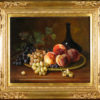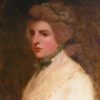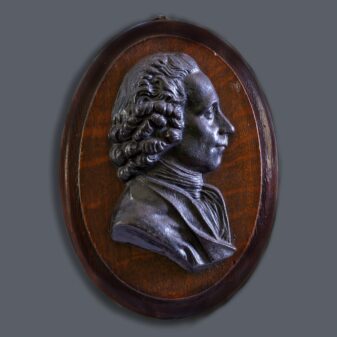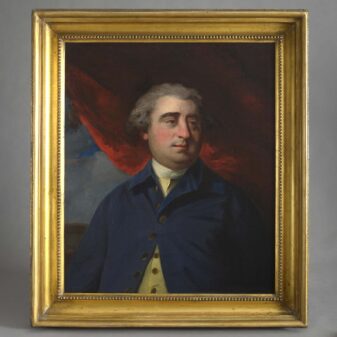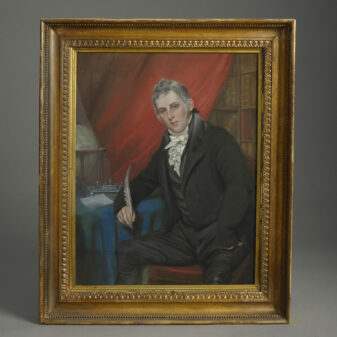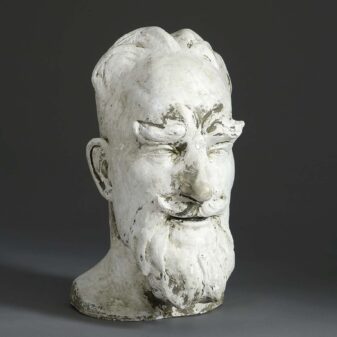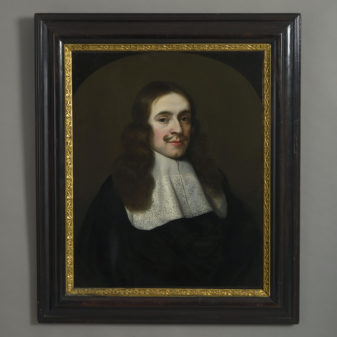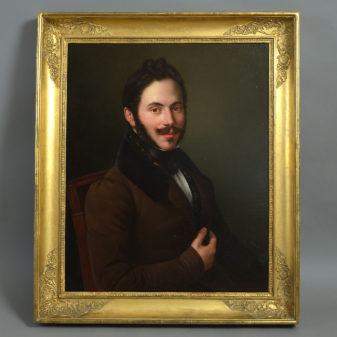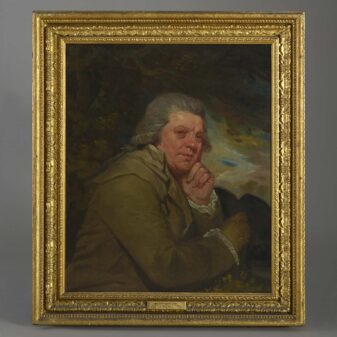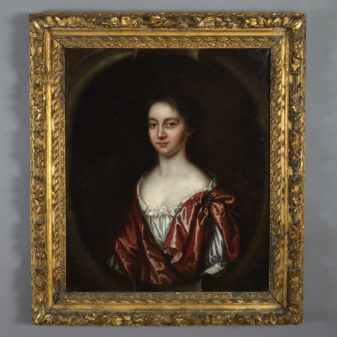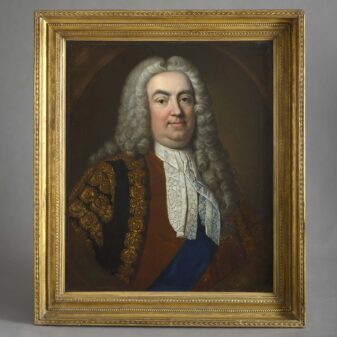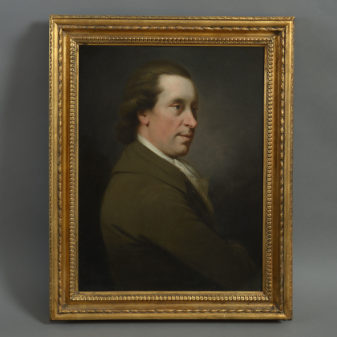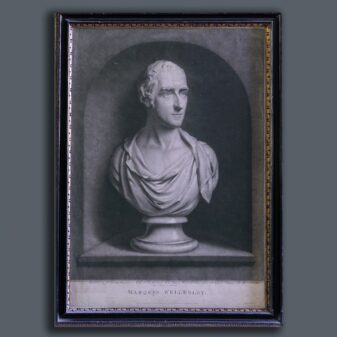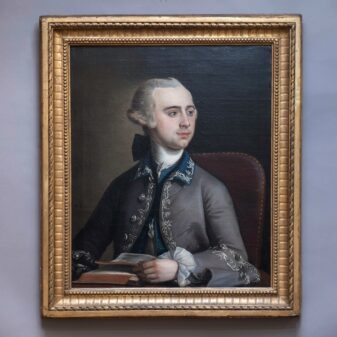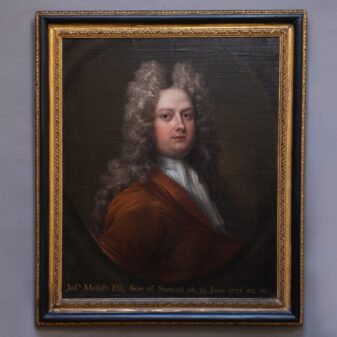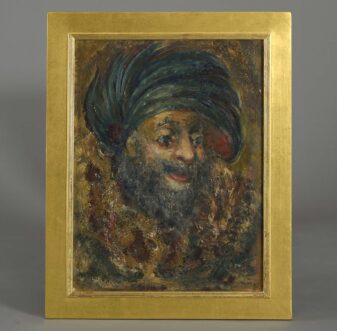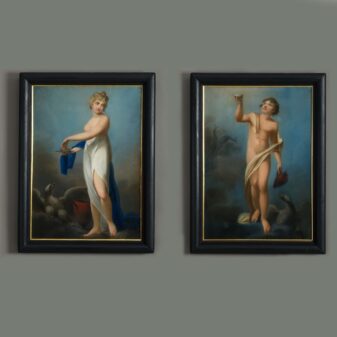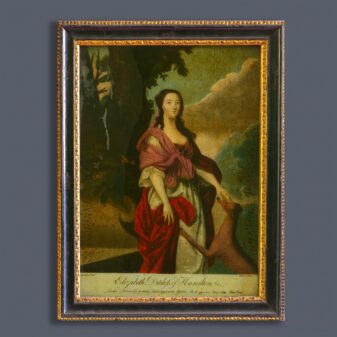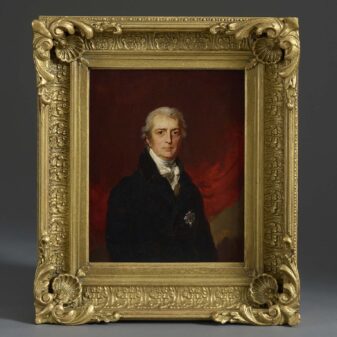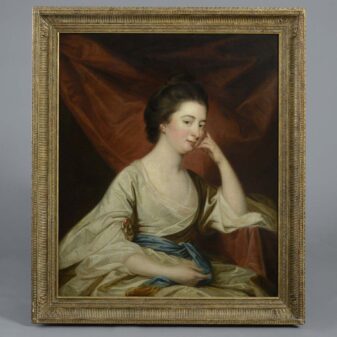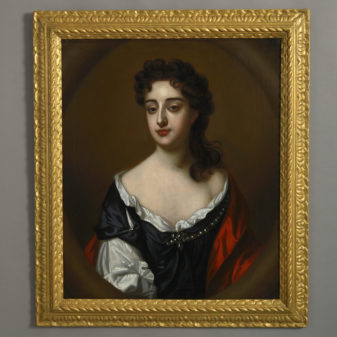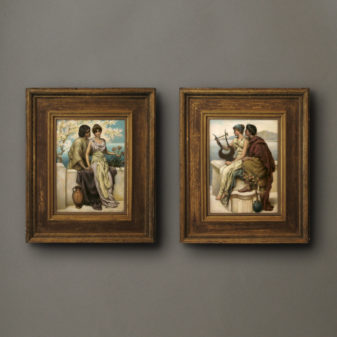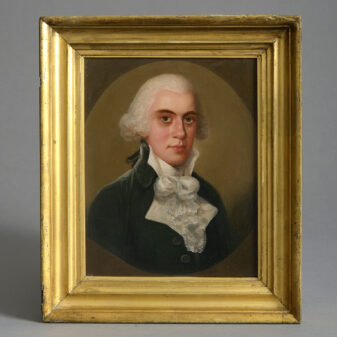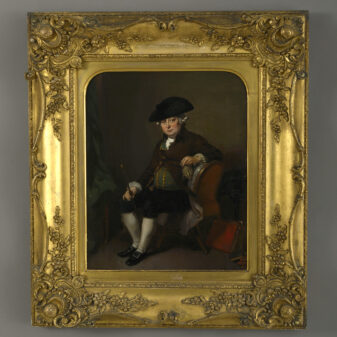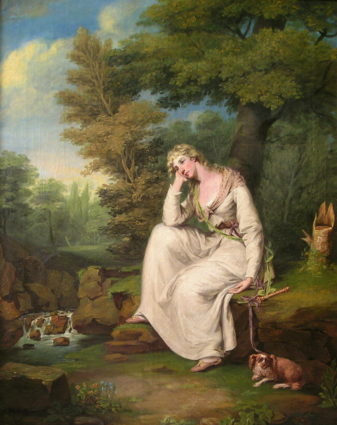Portrait of Antonio Niccolini (1701-1769) by Thomas Gibson (1680-1751)
£18,000
SOLD
Framed Dimensions: 69 inches x 49 inches (175.5 x 124.5 cm)
Antonio Niccolini (1701-1769)
The sitter in this portrait, having remained unknown for many generations, has recently been identified as the Italian nobleman Antonio Niccolini (1701-1769). An immensely powerful family, descended from the Sirigatti landowners of Tuscany, they were valuable power brokers for the Medicis and highly influential at court throughout the generations. The youngest child of Filippo, third Marquess of Ponsacco and Camugliano, Niccolini was a man of broad cultural interests, who combined a passion for literature, philosophy and the physical sciences with a growing curiosity towards countries at the forefront of intellectual debate in these fields, particularly England. Count Cosmas Migliorucci, (d.1726), was a member of the Order of St. Stephen along with Niccolini and a naturalised Englishman. An important merchant of Florence, who married into the English Catholic family of Nevill, he assisted Niccolini in excursions to London, when this portrait would have been painted. That these urbane Italian noblemen were undoubtedly friends would explain why the portrait came to be in the collection at Nevill Holt Hall, Leicestershire, where it was to remain for almost two hundred years.
The artist Thomas Gibson (1680-1751) worked in London as a portrait painter and attracted prestigious sitters such as the archbishops William Wake and John Potter as well as Sir Robert Walpole. His patrons included John, 1st Earl Poulett, and Augusta, Princess of Wales. Gibson’s practice earned him the appointment in 1711 as a founding director of Godfrey Kneller’s St Martin’s Lane Academy, the forerunner of the Royal Academy schools. Engraver and antiquary George Vertue (1683-1756) speaks of Gibson as a man ‘universally belovd for his affability & good nature’ and praises him for his ‘correct & firm manner of drawing’, which is all too evident in this depiction of Niccolini.
Painted in 1725, this portrait is one of Gibson’s most striking works and a magnificent study of style and fashion from the period. From the sumptuous blue velvet court coat with heavily embroidered stiffened cuffs and fabulously decorated waistcoat, to the elegant buckled shoes and silver trimmed hat, grandeur and luxury is clearly evident, but in a distinctly English understated manner. The opulent surroundings and accoutrement that might accompany continental portraits of the same period do not figure here; rather Gibson has contrasted the figure of Niccolini with a classical architectural background of cool stone work. Here we can detect a change of mind in the artist to his composition as the pentimento of a fountain exists to the right and to the family armorial on the plinth to the left. A flavour of Italy is indicated in the view beyond the elegant nobleman, as military trophies adorn the high balustrade, with a backdrop of swaying Cyprus trees set against a blue Tuscan sky. Much admired the antique military trophies of Octavianus Augustus on the Campidoglio in Rome were probably the ultimate source of these and no doubt allude to Niccolini’s ancestor Arrigo who earned the family name ‘Sirigatti’ after his courage in the Battle of Beneveto in 1266. They could also allude to the earlier martial character of the Order of St. Stephen, the red-ribboned cross of which Niccolini nobly wears.
The Order of St Stephen was a Tuscan military order founded, with Papal approval, by Cosimo I de’ Medici, first Grand Duke of Tuscany, in 1561 with the intention of safeguarding the Duchy’s maritime commerce from the depredations of pirates and of protecting western Mediterranean Christendom from the Ottoman Empire. To this end they protected Christian – and especially Italian – shipping from their base on the island of Elba throughout two centuries. By the early eighteenth century their martial character had considerably lessened and young noblemen joined to learn the knightly-monastic virtues of a chivalric order that had close associations with the Medici ruling house of Tuscany and a prestigious membership.

